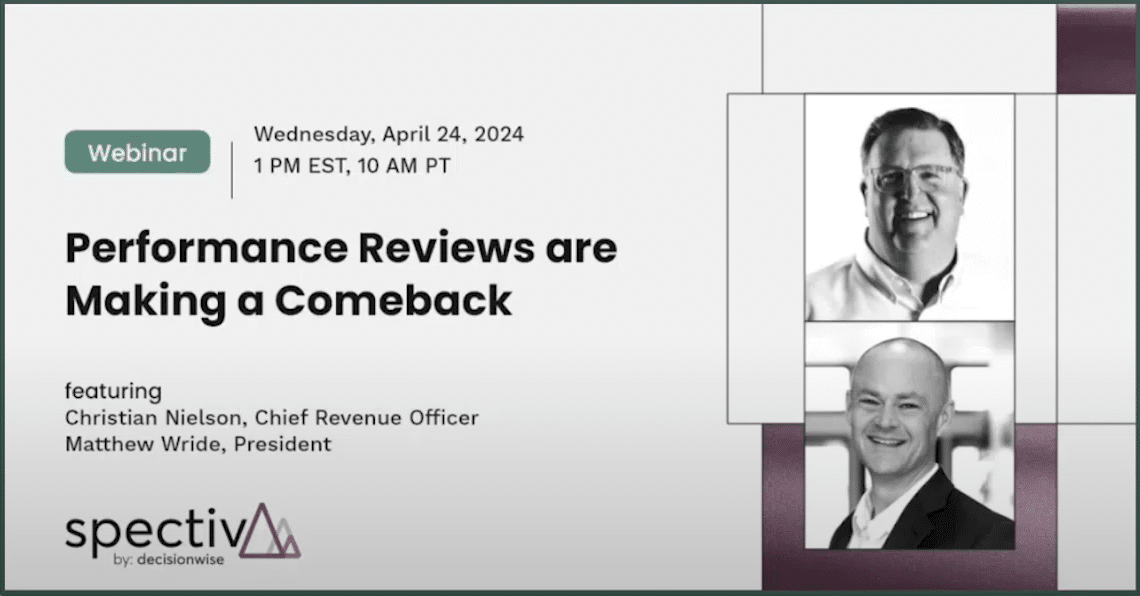Introduction
At the heart of any successful organization lies its people. Organizations are turning to performance management software to help them optimize employee productivity, align goals, and foster employee growth and development. The challenge is that software solutions can sometimes take over for managers and leaders, relegating them to “task completers” instead of leaders that teach, guide, and mentor. In addition, performance management software can reduce employees to mere data points, overlooking their unique needs, aspirations, and potential.
Ultimately, one question many are facing is whether software’s ever-present nudges are too much, and therefore causing more irritation than assistance. Is there too much focus on “scripting” the outcome instead of fostering natural interactions that help people grow? Perhaps the best scenario is human mentorship, i.e., human intelligence, that is lightly guided by performance management software.
Pros of Performance Management Software
- Efficiency and Automation: Performance management software helps to streamline processes by automating tasks such as goal-setting, performance reviews, and feedback collection. This efficiency helps HR teams to focus on strategic initiatives.
- Objective Measurement: Software provides a standardized framework for evaluating performance. Clear metrics help employees understand expectations and track progress.
- Data-Driven Insights: Feedback collection generates data analytics, enabling evidence-based decision-making. HR professionals can identify trends, address skill gaps, and allocate resources effectively.
- Continuous Feedback: Real-time feedback tools foster ongoing communication between managers and employees. Regular check-ins promote growth and course correction.
Cons of Performance Management Software
- Overemphasis on Metrics: While data is valuable, an excessive focus on metrics can overshadow qualitative aspects. Employees may feel reduced to numbers rather than holistic contributors. In addition, conversations become scripted instead of intentional and empathetic.
- Administrative Burden: Implementing and maintaining software requires time and effort. HR teams must ensure proper training and support for all users. The time and expense of maintaining performance management software must be weighed against adoption and usage by front-line employees.
- One-Size-Fits-All Can be a Problem: Some employees resist digital transformation. Adapting to new tools can be challenging, especially for long-standing team members. In addition, we are substituting a tech company’s view of how management should take place (software designed in a tech office) instead of letting managers and leaders determine how best to guide their people and organize their work. When you select a software vendor you get a tool but you also get their point of view of how that tool should work, which indirectly impacts leadership styles and preferences inside your organization.
- Bias and Fairness: Algorithms used in software may inadvertently perpetuate biases. HR professionals must remain vigilant to ensure fairness and equity.
What Employees Like
- Transparency: Employees appreciate clear expectations and performance criteria. Software provides transparency, reducing ambiguity and creating objective standards.
- Timely Feedback: Regular reminders and nudges prompt managers to provide timely feedback. Employees value constructive input that helps them improve.
- Goal Alignment: Software facilitates alignment between individual goals and organizational objectives. Employees feel more connected to the company’s mission.
What Employees Dislike
- Rigidity: Some software systems lack flexibility. Employees desire personalized approaches that consider their unique strengths and challenges.
- Frequency Overload: While reminders are helpful, excessive notifications can overwhelm employees. Striking the right balance is essential.
- Lack of Human Interaction: Software cannot replace genuine human interactions. Employees still crave face-to-face conversations and mentorship.
The Compelling Case for Human Intelligence Instead of Artificial Intelligence
At the end of the day, people respond to stories and leadership. Most effective are stories that help elevate the human condition. Indeed, stories are one of the most effective tools leaders have in their toolbox to help them guide those they lead.
Software is not a story, it is a framework, and fidelity to the framework should never replace human relationships. In essence, the goal of any performance management system is to help leaders become better mentors and coaches. This should be the starting point.
Effective manager/employee relationships provide a fertile ground for nurturing potential. A seasoned manager guides an employee, sharing wisdom, experiences, and insights. Organic exchanges fuel growth, creativity, and resilience. Performance management software, despite its efficiency, lacks the depth and nuance required to unlock an employee’s full potential.
Life isn’t linear; neither is professional growth. Leaders understand this. They help employees navigate setbacks, failures, and uncertainties. Performance management software, though efficient in tracking KPIs, rarely addresses the emotional resilience needed during tough times.
Engaged employees are the lifeblood of any organization. Strong manager/employee relationships foster engagement by creating a sense of belonging, purpose, and investment. Performance management software, while efficient for administrative tasks, often leaves employees feeling detached and disengaged.
Employees who feel valued and supported tend to stay. Effective leadership enhances retention rates. When employees receive personalized guidance and acquire relevant skills, they become invested in the company’s success. Performance management software alone cannot foster the loyalty that leadership does.
Finally, effective leadership transcends immediate goals. It nurtures a long-term vision. A good leader helps employees see beyond their current roles, envisioning career paths and leadership trajectories. Performance management software tends to focus on short-term targets instead of maximizing organizational long-term objectives.
Conclusion
In conclusion, while performance management software has its merits, it cannot replace the irreplaceable human touch. Training, coaching, and mentorship stand as pillars of growth, nurturing not just skills but the very essence of an organization: its people.
While performance management software is a powerful tool, its success lies in striking the right balance between efficiency and employee well-being. Remember, behind every data point is a person striving to excel. Keep that human touch intact, and your performance management efforts will yield remarkable results.




